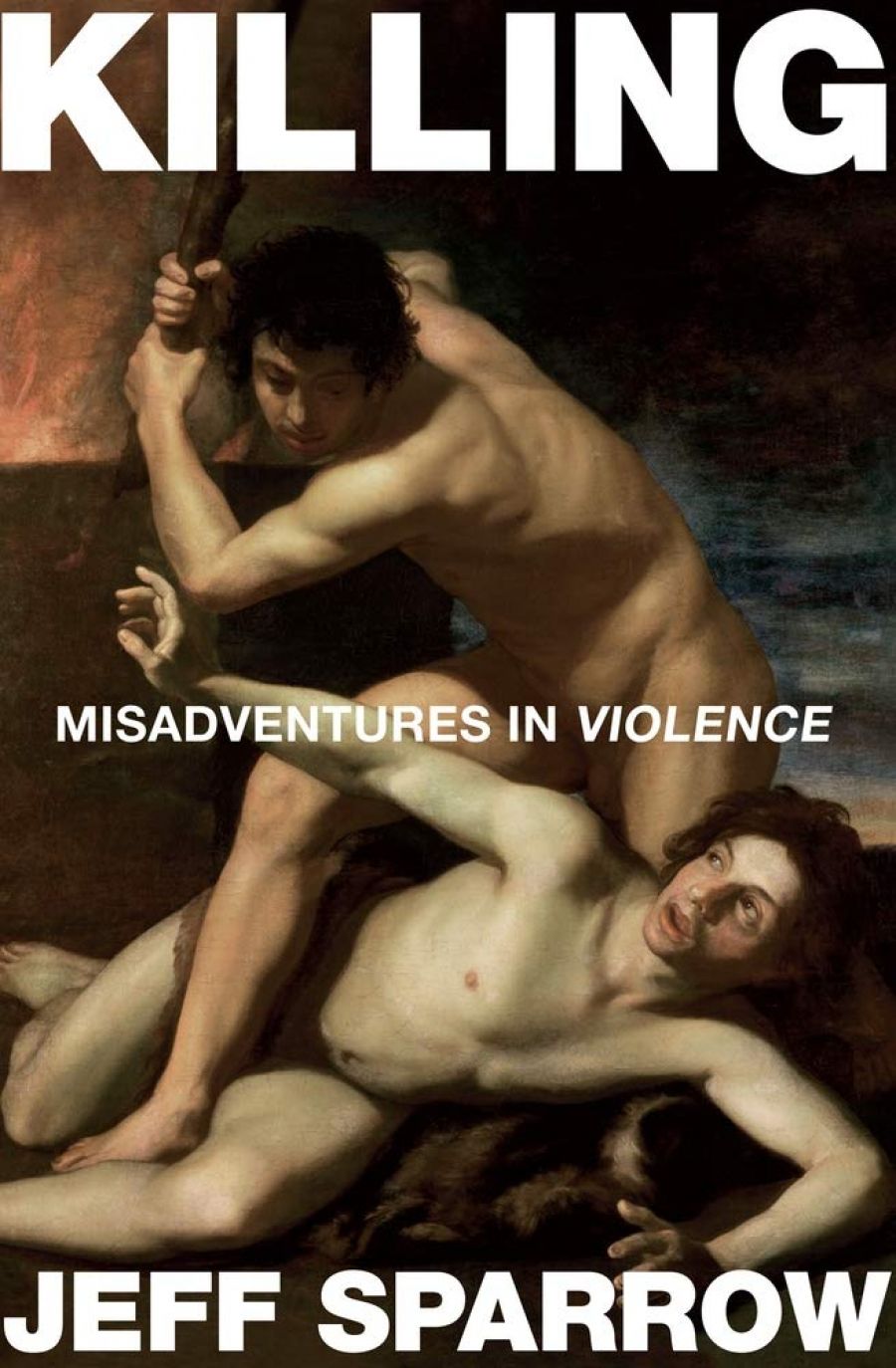
- Free Article: No
- Contents Category: Non-fiction
- Review Article: Yes
- Article Title: The limits of abhorrence
- Online Only: No
- Custom Highlight Text:
On 4 October 1918, one month before he was killed, Wilfred Owen wrote to his mother describing the ‘mop-up’ operations in which his division was engaged. ‘It passed the limits of my Abhorrence. I lost all my earthly faculties and fought like an angel.’ Owen assured his beloved mother that his nerves were ‘in perfect order’. This letter, written by the poet who gave us ‘Anthem for Doomed Youth’, the metaphor of a generation sacrificed like cattle on the battlefield, is a terrible indictment of war and its effect on the human psyche.
- Book 1 Title: Killing
- Book 1 Subtitle: Misadventures in violence
- Book 1 Biblio: Melbourne University Press, $34.99 pb, 282 pp
- Book 1 Cover Small (400 x 600):

- Book 1 Cover (800 x 1200):

In Killing: Misadventures in violence, Jeff Sparrow, editor of Overland, has considered the ramifications of taking a life in battlefield conditions and, by extension, state-sanctioned execution. His interest in this subject was sparked by the discovery in country Victoria of a Turk’s mummified head. The victim probably died as the result of a battlefield execution at Gallipoli; the head was kept as a trophy. To distract himself from a stalled PhD, Sparrow became fascinated by the head and what it might tell him about killing, war and capital punishment – not to mention the hoarding of such macabre military souvenirs.
Sparrow’s scope is broad; his intentions are unclear to himself. The work, to be published under the imprimatur of a university press, demands rigorous research standards. Surely the author is courting failure. This tension – the quest for the unanswerable on the one hand and the author’s possible failure on the other – makes Killing an entertaining and provocative work. There are dangerous leaps, but this is a young, enchanted man on a quest, and Perceval is always destined to stumble.
Sparrow finds that the literature of killing is meagre and contradictory. On the one hand, there is the largely anecdotal evidence presented by Joanna Burke in An Intimate History of Killing: Face-to-face K=killing in 20th century warfare (1999): ‘ordinary, well adjusted people kill remarkably easily – enthusiastically even.’ Then there is the view propounded by former US Lieutenant Colonel Dave Grossman in On Killing: The psychological cost of learning to kill in war and society (1996), in which he argues that, in order to kill, one must ‘overcome a hard-wired aversion’. Grossman cites many cases where firearms are found fully loaded after battles.
During World War I, many Australian soldiers said that taking a human life was like ‘potting kangaroos in the bush’. Sparrow goes on a kangaroo shoot to see what this tells him. Though he hates every minute, he dreads being perceived as a nerd or a weakling. He masks his fears and participates in the kangaroo shoot as a sort of butcher’s apprentice. This is not enough. Back in Melbourne, the author visits an abattoir and witnesses the process of reducing an animal from living creature to supermarket commodity. Process is the key concept here. Every participant in the abattoir ‘process’ plays a part in separating the animal from life; no single individual is the sole killer. Psychological responsibility is thus dispersed.
Examining Grossman’s theories leads Sparrow to consider state executions. If Grossman is right, the close-range killing of a powerless individual should prove traumatic. The place to consider the deliberate killing of people, Sparrow decides, is the United States. This segue is a little contrived, but it is worth following the writer on his quest. The murky terrain he traverses makes for harrowing but rewarding reading.
Sparrow undertakes his research with minimal funding and little understanding of the harm he may do to his psyche. He manages to speak to legal executioners. One man is responsible for the right leg, one for the left and so on. That’s all very well if everything works. The examples of people who are burnt alive in the electric chair or who have to endure prolonged death throes after receiving lethal injections are awful – never mind the abhorrence one may feel at the notion of capital punishment.
Enter Fred A. Leuchter. Sparrow, in a sleazy diner, interviews this execution technician and infamous Holocaust denier. He finds Leuchter personable, if deluded. Leuchter has become opposed to capital punishment because ‘we can’t do it right’. Leuchter cites example after horrific example where the condemned are tortured to death. Leuchter has never attended an execution; the very idea is offensive to him. Another executioner summarises the paradox faced by practitioners: ‘If you don’t like the work … it will damage you and you should get out. If you do like it, you’re already damaged.’ Other executioners report distress at not feeling distressed.
Returning to Australia, Sparrow reports that he is something of a mess. He suffers from bad dreams, then simply can’t sleep. Nerves taut, he endures days shrouded in fatigue and a sense of imminent catastrophe. Perceval has stared into the abyss, and the abyss has stared back. Sparrow displays the symptoms of post-traumatic stress disorder. Wanting to experience what firing a gun feels like, hoping it might be cathartic, he tries his hand on a firing range. He is assailed by the fear that the muzzle might snake back on itself and shoot him in the face.
For me, this part of the book – the author clearly psychologically afflicted – is the most beguiling. I wanted to leap into the pages and persuade this young man not to damage himself further. Compulsively, though, Sparrow continues to research more and more horrific accounts of executions.
In social science research, the most problematic findings are those relying on anecdote. Subjects tell you what you want to hear. It is almost impossible for other researchers to replicate the conditions whereby the same set of answers can be reached. Refusal to speak is as telling as an eager willingness to tell all, but silence is not able to be quantified. Sparrow does not want to believe Burke’s conclusion that it is easy to kill. His instinct is that it is not.
Back in the United States, Sparrow interviews disaffected veterans of the conflict in Iraq. This is the weakest part of the book. The veterans tell him that killing is hard, killing is easy. Why Sparrow needed to speak to American veterans of Iraq rather than Australians is unclear. Both Australia and America’s defence departments have dedicated units dealing with mental health issues, yet Sparrow does not approach representatives from these organisations.
In this new century, new wars are proliferating. Australian men and women are dispersed around the world, in theatres of war that defy explanation. As peacekeepers they will experience the best of times; the worst will come if they are required to kill. It is only right to question the psychological ramifications of killing other people. Jeff Sparrow laid his mental health on the line to pursue this theme. He doesn’t find the holy grail, but this reader applauds him.
In the letter to his mother, Wilfred Owen related how he captured a German machine gun and scores of prisoners. ‘I only shot one man with my revolver (at about 30 yards!); the rest I took with a smile.’


Comments powered by CComment